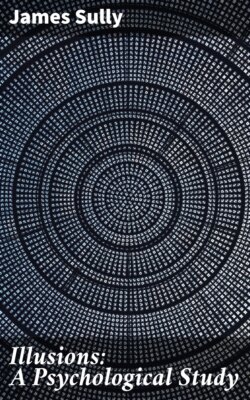Читать книгу Illusions: A Psychological Study - Sully James - Страница 16
ILLUSIONS OF PERCEPTION—continued.
ОглавлениеB. Active Illusions.
When giving an account of the mechanism of perception, I spoke of an independent action of the imagination which tends to anticipate the process of suggestion from without. Thus, when expecting a particular friend, I recognize his form much more readily than when my mind has not been preoccupied with his image.
A little consideration will show that this process must be highly favourable to illusion. To begin with, even if the preperception be correct, that is to say, if it answer to the perception, the mere fact of vivid expectation will affect the exact moment of the completed act of perception. And recent experiment shows that in certain cases such a previous activity of expectant attention may even lead to the illusory belief that the perception takes place before it actually does.[47]
A more palpable source of error resides in the risk of the formation of an inappropriate preperception. If a wrong mental image happens to have been formed and vividly entertained, and if the actual impression fits in to a certain extent with this independently formed preperception, we may have a fusion of the two which exactly simulates the form of a complete percept. Thus, for example, in the case just supposed, if another person, bearing some resemblance to our expected friend, chances to come into view, we may probably stumble into the error of taking one person for another.
On the physical side, we may, agreeably to the hypothesis mentioned above, express this result by saying that, owing to a partial identity in the nervous processes involved in the anticipatory image and the impression, the two tend to run one into the other, constituting one continuous process.
There are different ways in which this independent activity of the imagination may falsify our perceptions. Thus, we may voluntarily choose to entertain a certain image for the moment, and to look at the impression in a particular way, and within certain limits such capricious selection of an interpretation is effectual in giving a special significance to an impression. Or the process of independent preperception may go on apart from our volitions, and perhaps in spite of these, in which case the illusion has something of the irresistible necessity of a passive illusion. Let us consider separately each mode of production.
Voluntary Selection of Interpretation.
The action of a capricious exercise of the imagination in relation to an impression is illustrated in those cases where experience and suggestion offer to the interpreting mind an uncertain sound, that is to say, where the present sense-signs are ambiguous. Here we obviously have a choice of interpretation. And it is found that, in these cases, what we see depends very much on what we wish to see. The interpretation adopted is still, in a sense, the result of suggestion, but of one particular suggestion which the fancy of the moment determines. Or, to put it another way, the caprice of the moment causes the attention to focus itself in a particular manner, to direct itself specially to certain aspects and relations of objects.
The eye's interpretation of movement, already referred to, obviously offers a wide field for this play of selective imagination. When looking out of the window of a railway carriage, I can at will picture to my mind the trees and telegraph posts as moving objects. Sometimes the true interpretation is so uncertain that the least inclination to view the phenomenon in one way determines the result. This is illustrated in a curious observation of Sinsteden. One evening, on approaching a windmill obliquely from one side, which under these circumstances he saw only as a dark silhouette against a bright sky, he noticed that the sails appeared to go, now in one direction, now in another, according as he imagined himself looking at the front or at the back of the windmill.[48]
In the interpretation of geometrical drawings, as those of crystals, there is, as I have observed, a general tendency to view the flat delineation as answering to a raised object, or a body in relief, according to the common run of our experience. Yet there are cases where experience is less decided, and where, consequently, we may regard any particular line as advancing or receding. And it is found that when we vividly imagine that the drawing is that of a convex or concave surface, we see it to be so, with all the force of a complete perception. The least disposition to see it in the other way will suffice to reverse the interpretation. Thus, in the following drawing, the reader can easily see at will something answering to a truncated pyramid, or to the interior of a cooking vessel.
